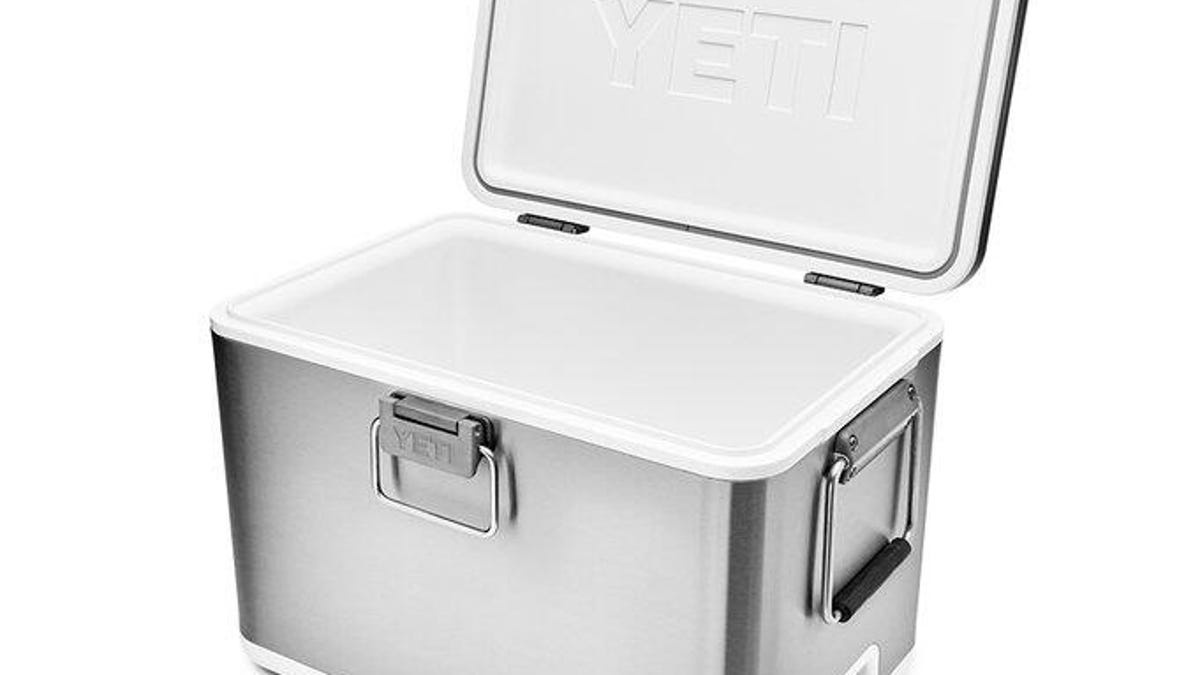 Why You Can Trust CNET
Why You Can Trust CNET Yeti V Series: Would you pay $800 for a stainless steel cooler?
The new Yeti V Series cooler promises "the best thermal performance that science allows" (and it probably costs more than your smartphone).
Yeti makes some of the most popular high-end coolers on the market, but they sure don't come cheap. Case in point: The new Yeti V Series cooler, which goes up for sale on Dec. 5. The first stainless steel cooler Yeti's ever manufactured, the V Series promises ice retention that's 50% better than any cooler the company has ever made -- but it rings in at a whopping $800.
Eight-hundred bucks! There are perfectly decent refrigerators that cost less than that. (Yeti doesn't yet show any prices for the UK or Australia on its website, but converted from the US number, it works out to about £620 or AU$1,165.)
Consider also that a standard Yeti hard cooler of comparable capacity retails for $450, which is plenty expensive to begin with. For the extra money, the V Series adds in that stainless steel body and the lofty new performance claims. At 35 pounds, it weighs roughly the same as the previous-gen model in rotomolded plastic, but the walls appear to be much thinner, which makes it less wide and a bit less bulky.
The Yeti V Series (left) is closest in capacity to a Yeti Tundra 75, though with less insulation lining the walls, it looks to be a lot less bulky.
With their thicker walls, the existing, rotomolded Yeti coolers have routinely crushed the competition in our tests, where we load each cooler into a climate-controlled test room, pack each one with a smallish amount of ice and then track the ambient temperature inside every minute for 48 hours. No other cooler I've ever reviewed has come close to Yeti in that test.
Two years' worth of cooler tests shows that the Yeti Tundra line of coolers holds the cold better than just about anything else. For a few hundred dollars more, the Yeti V Series promises to be even better.
Now, the new stainless steel model promises to do 50% better -- and apparently with less insulation. That's quite the claim, to say the least -- but, again, this is an $800 cooler we're talking about. If it wants to be anything other than an outdoorsy status symbol, then it'll need to live up to those lofty expectations in our tests (and then some, quite frankly).
Yeti tells me it all comes down to the company's proprietary "PermaFrost" insulation, along with a refined vacuum-insulation technique borrowed from Yeti's line of stainless steel drinkware. I'll be eager to put all of that to the test next spring, when it's time for our yearly cooler check-in.
Speaking of that stainless steel, Yeti calls it "kitchen-grade," and claims that it's designed to age well over years of use. The cooler locks shut with a single center latch, and features cast aluminum hinges and a standard leak spout.
The new cooler goes up for sale just in time for the holidays on Dec. 5, and is slated to arrive at select retailers in the spring of 2020. We'll plan on testing it out a little closer to then.


